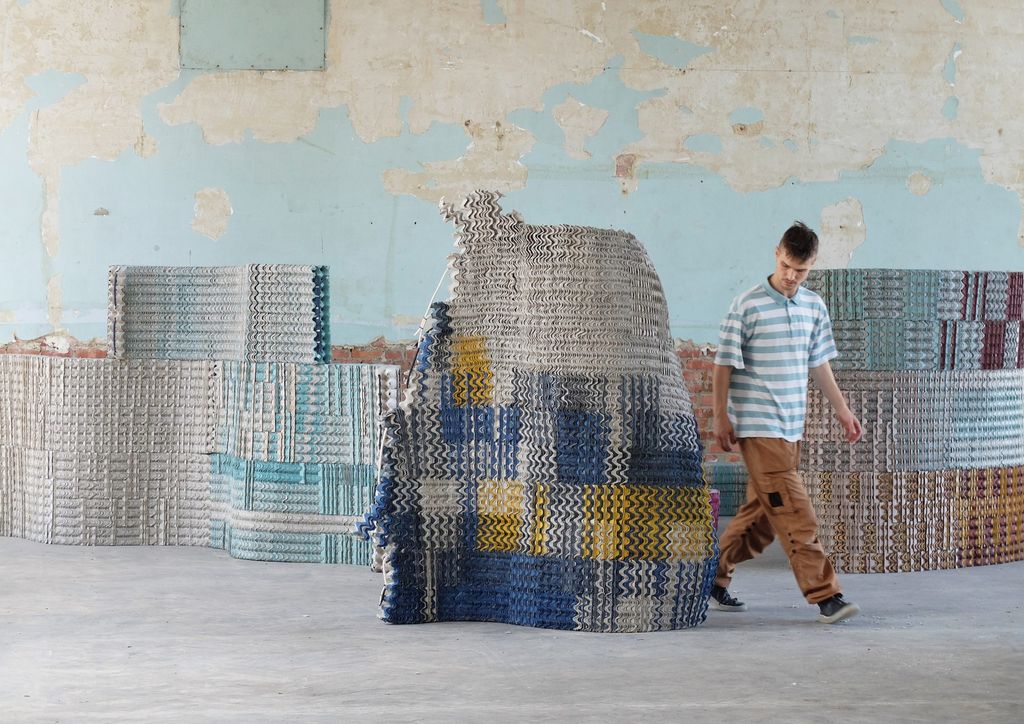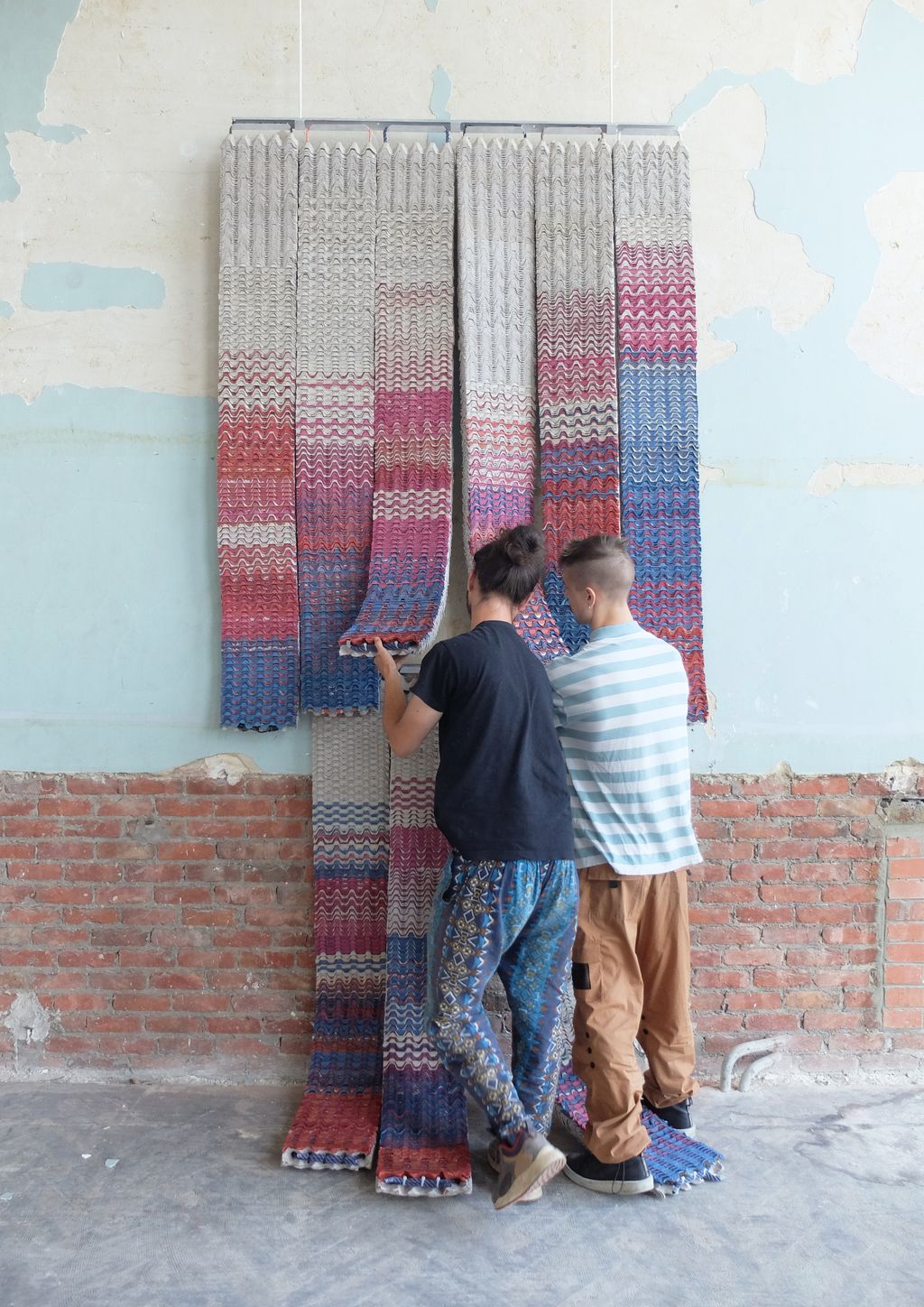
Laureate of the WBDM prize recently awarded as part of the 17th Tremplin awards, an annual competition for designers who have graduated from an Art School in Wallonia and Brussels, designer Yoann Piccardi (27 years of age) gave us his singular and very committed vision of design 2.0. Partway between art, craft and design, his EggwaveWorkset project gives a poetic dimension to the notion of reuse.

He could have become a visual artist, a graphic designer, a silk-screen printer, or even a fashion designer. At less than 30 years of age, this Grenoble native who trained at La Cambre – and is now living in Brussels – first took a course in applied arts before studying plastic arts. But it was when he arrived in Belgium, where he enrolled at La Cambre to begin a Master’s degree in textile design, that he found his niche.
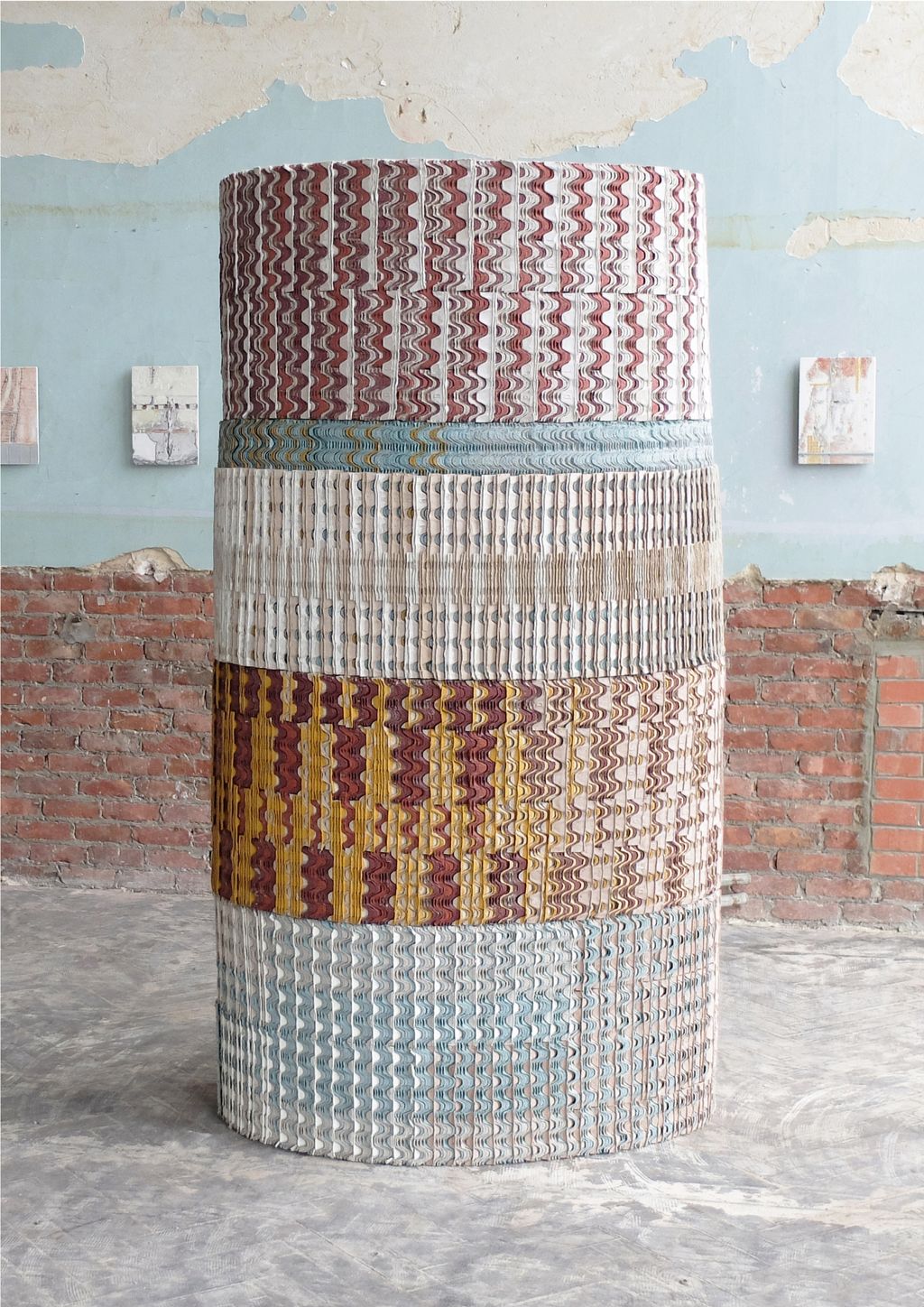
After my three years at the Beaux-Arts in Montpellier, I felt the need to return to a more technical approach. It was while reappropriating the tools of an old silk-screen printing workshop in a village in the Drôme that something clicked. That’s when I became even more interested in the notion of reuse and the transformation of materials. Ecology has always played a central role in my life. In the first year of my Master’s, our classes were about experimenting with cardboard. While thinking about the transformation of this cardboard into textile material, I returned to the world of applied art. I finally felt at peace with myself from the point of view of process and work philosophy. In my third year, I expanded my research and adopted a global artistic approach that encompasses design, textiles and architecture.
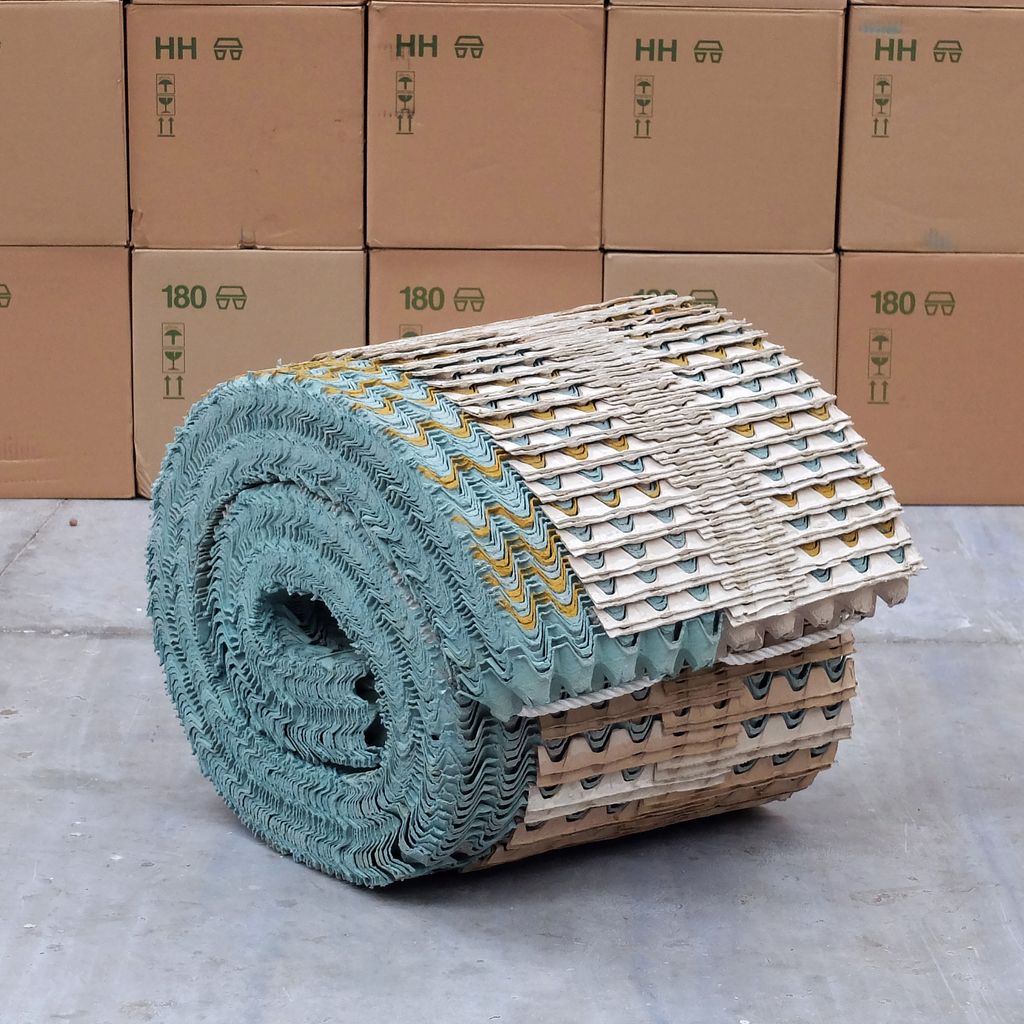
EggwaveWorkset is an artisanal reuse channel that seems to bring together every facet of your approach.
I am aware that the concept is somewhat utopian, but that doesn’t stop me believing in it. I am convinced that by continuing my work and involving myself in the transmission of knowledge, I can raise awareness and offer new perspectives to people retraining or looking for a meaningful project, and also, at my level, broaden my field of experimentation by developing new crafts adapted to the concepts I want to create. This is why, through Creative Commons (an international association that facilitates the provision of information through creative licences, ed.), I chose to share my research by offering people interested in my approach the possibility to appropriate my reuse techniques.
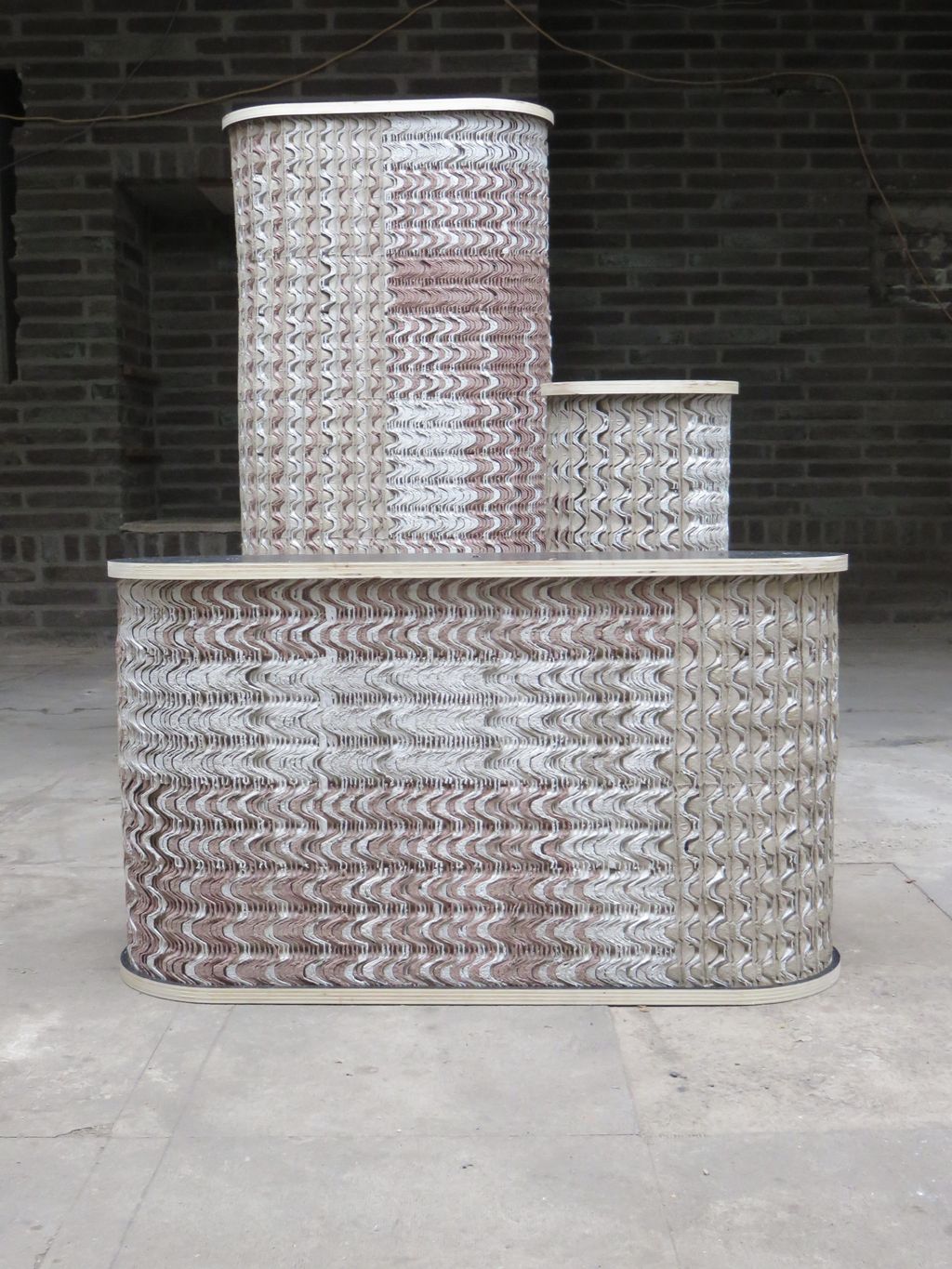
You work in the Micro Factory, a shared workshop in Brussels which aims to become a micro-industry and is at the origin of small series centred on the notions of local, craft and reuse. How has this workplace influenced your practice?
The aim of the process I started during my studies is to transform honeycomb trays (egg cartons made of moulded cellulose that I initially collected from the Tanners market) into ready-to-use modules. While one of my goals is to raise awareness about reuse, respect for materials and ecological and social practices, I have also developed some more practical applications. I designed an acoustic ceiling for a restaurant in Dunkirk. I also presented some pieces (transformable seats and a screen) that were shown at exhibitions. At this level, I am broadening my approach by giving it a more artistic resonance, since I also work on colour. For me, the real luxury lies in this positive resilience and in raising awareness. By giving free access to my processes, I inspire people, whether they are creators themselves or just design enthusiasts, or even collectors, to find plan Bs that are more social and ecological, but also playful and collaborative.

The prize awarded by WBDM consists of support that will help you develop your project over a year by promoting connections and your presence at international exhibitions. What does this award mean to you?
I am giving myself ten years to continue my research into this field and its possible outlets. Participating in international fairs, such as the one in Milan, for example, allows you to change your environment and create positive encounters. I have always considered myself lucky to have total freedom in what I do. If I’m constantly developing new projects, I need time to implement them. With this process, which involves transforming fibre into a flexible and adaptable surface, my field of action is infinite. One of my goals, for example, is to design an outdoor awning, but I have many others!
